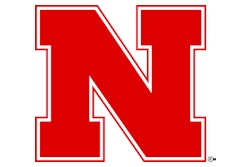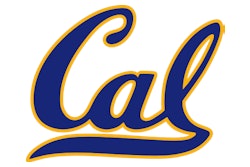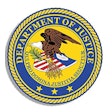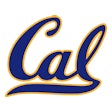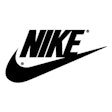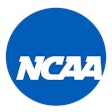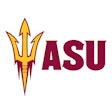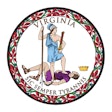The NCAA's Promotion of College Hoops Continues Despite Increasing Fan Disinterest
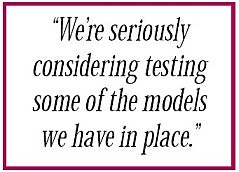
A little girl writes on a blackboard - "I will not watch NCAA basketball on my mini-TV at school" - under the watchful eye of her teacher, who all the while is unaware that the girl continues to keep tabs on her favorite team through a cleverly hidden earphone, even as she completes her penance.
The public-service announcement, which aired last spring during both the men's and women's NCAA basketball tournaments, was one of three TV spots designed by the association to depict the fanatical nature of college basketball followers. The real-life irony, perhaps, is that fewer people than ever appear to share the fictitious schoolgirl's allegiance to the game, and tournament TV audiences have become small enough that such PSAs may succeed only in preaching to the college basketball converted.
It's an unsettling reality that NCAA officials have tried to alter in earnest over the past three years, and the PSAs are only part of the basketball defense strategy. The association has launched a Web site (www.ncaabasketball.net), designed a logo, created a mascot and distributed promotional kits to member institutions in all three divisions - all with the intent of boosting both awareness of and loyalty to college hoops.
The association first began to formally assess college basketball's audience prior to the 1997-98 season, when it formed the NCAA Basketball Marketing Subcommittee in response to the consistently falling attendance figures and TV ratings for one of the association's prized assets: men's basketball. That subcommittee - made up of athletic directors, marketing administrators, coaches' association representatives, conference officials, NCAA representatives and others - then hired an independent research firm to gather data from fan focus groups, interviews with sponsors and media partners, and random public surveys.
The promotional initiatives followed, but measuring their success, or lack of it, has been difficult. The research firm returned this summer to propose a second round of data gathering, which could take place this fiscal year and be used to benchmark progress against the initial findings, according to Dennis Cryder, the NCAA's vice president of marketing, licensing and promotions. "We're seriously considering testing some of the models we have in place," Cryder says. "Are they working? Are we moving the needle?"
In the meantime, numbers currently at the NCAA's disposal - at least those relating to men's basketball - are less than encouraging. The 14.1 television rating garnered by last April's Division I tournament championship game between Michigan State and Florida not only was the lowest since CBS began airing the event in 1982, but represented an 18 percent drop from the previous record low reached a year earlier. "The ratings are a red flag," admits Cryder. "We obviously monitor that with our partners at CBS. We look at the variables, such as counter-programming and the attractiveness of the teams. It's not good news, but at the same time we want to say, 'What can we do to help with viewership?' "
While fewer people are tuning in to men's college basketball, not as many are turning out for it, either. Last season, all three divisions showed a drop in average per-game attendance for at least the second straight year. The typical Division I crowd has thinned eight out of the past nine years - including the past five running - to pull the record per-game average of 5,735 set in 1991 down to 5,459. In Division II, the current attendance losing streak has hit 11 seasons, and last year's rock-bottom average crowd of 882 is a far cry from the 1,811 high posted in 1977, the first year for which statistics are available. Meanwhile, attendance decreases in nine of the past 10 years have left the average Division III audience at 446, less than half of what it was in 1977.
At least the Division I tournament, arguably basketball's greatest spectacle and the NCAA's undisputed cash cow, has fared better at the turnstiles, posting a record per-game attendance average of 21,187 as recently as 1999.
The women's game, meanwhile, is faring significantly better. Average pergame attendance for all three divisions combined has risen nine straight years (and 12 out of the past 14) to a record 744 fans. Division I women haven't witnessed an attendance drop since 1991 and are now drawing an average crowd of 1,491, more than a thousand per game more than in 1982, when the NCAA began compiling the numbers. Likewise, Divisions II and III have seen more ups than downs over the past four seasons, though their per-game growth has been modest.
Perhaps the only bad news for women's basketball was the television performance of last year's Division I championship game. Despite showcasing the top two teams in the nation, ESPN's rating of 3.5 was down 19 percent from the previous season's record 4.3, though network executives attributed the disinterest to the fact that the game, a 71-52 win by Connecticut over Tennessee, was surprisingly one-sided.
With its most pressing objectives yet unrealized, the marketing subcommittee met for the final time earlier this year, the casualty of a power shift within the NCAA hierarchy. The initiatives live on, though, supported by a 2000-01 budget of $1.05 million. That money, according to NCAA reports, is earmarked for continued research and development, as well as a variety of new proposals - from a traveling exhibit that would promote college basketball on campuses and in shopping malls to a "frequent fan" program that would reward repeat ticket buyers with free admission or other incentives. An additional $1.5 million is budgeted for ongoing promotional efforts, including the PSA program, the basketball promotional kits sent to member schools, the NCAA Basketball character J.J. Jumper (a costumed mascot rolled out during the 2000 tournaments) and maintenance of the NCAA Basketball Web site.
These initiatives represent the subcommittee's legacy, but the fate of NCAA marketing, licensing and promotions, including that for basketball, now rests in the hands of the association's president, per the October 1999 recommendation of the NCAA Executive Committee.
"Frankly, I think the subcommittee did what it set out to do in terms of getting some wheels in motion," says Carolyn Schlie Femovich, executive director of the Patriot League and the former chair of the Basketball Marketing Subcommittee. "Certainly some things are moving forward, but it's not something that you get done overnight, that's for sure."
















